Mon, July 19, 2010 | Intelligence and Terrorism Information Center
A comparison of the IHH violence directed against the IDF during the Mavi Marmara flotilla (June 2010) and the violence employed by the Lifeline 3 activists against the Egyptian security forces (January 2010) shows many similarities, especially the central role of Turkey and the violent behavior of IHH
Overview
1. In December 2009-January 2010 an international aid convoy called Lifeline 3 was dispatched overland to the Gaza Strip. It was organized by an organization called Viva Palestina, headed by the pro-Palestinian former British MP George Galloway. Two hundred and fifty Turks participated in the convoy, approximately half of the total number, and prominent among them were IHH activists led by Bülent Yildirim.
2. A retrospective analysis of the convoy’s conduct, using information from the Turkish media and the IHH website, indicates similarities between Lifeline 3 and the violent confrontation aboard the Mavi Marmara:
A. In both instances the group was heterogeneous, and included Islamist extremists (especially Turks), activists and organizations affiliated with the European radical left and authentic human rights volunteers who had answered the call to aid the Gazans.
B. In both instances Turkish support was central. The Turkish government played an important role in Lifeline 3, even though the convoy was dispatched by Viva Palestina. The Turkish government was involved in arranging for the convoy, and its organizers were guest of the Turkish Parliament. The heads of the government even intervened with the Egyptian authorities on behalf of the convoy. When the violent confrontation ended, the Turkish and Egyptian foreign ministers held talks for the release of the members of the convoy. As a result of those efforts the Egyptians even authorized some of the participants (Bülent Yildirim among them) to enter the Gaza Strip with part of the equipment they had brought.
C. In both instances the participants refused to obey the instructions of the Egyptian and Israeli authorities. The directors of Lifeline 3 defied the Egyptians, and their approach was confrontational and challenging (as during the Mavi Marmara incident).
D. The Lifeline 3 participants, especially the IHH operatives and their leader, Bülent Yildirim, behaved violently toward the Egyptian authorities, similar to their violent resistance to the IDF soldiers aboard the Mavi Marmara. Fifty operatives were wounded during the confrontation with the Egyptian security forces, five of them seriously. In an interview posted on the IHH website, Bülent Yildirim said that during the confrontation “we took seven Egyptian soldiers prisoner; we released three who were wounded…” (similar to the way three IDF soldiers were held for a short time by Turks during the fighting aboard the Mavi Marmara).
E. In both cases there were protest demonstrations in Istanbul. Following the confrontation with the Egyptian security forces protest demonstrations were held in Istanbul at which Egyptian President Mubarak was called a traitor and Hamas and Hezbollah flags were waved. The Mavi Marmara incident also led to anti-Israeli demonstrations throughout Istanbul, initiated by IHH and Islamist groups.
3. In the opinion of its organizers, the Lifeline 3 affair was a failure, it ruined relations with Egypt and drew attention away from Israel. The convoy raised little interest in both the Israeli and international media. The lessons of Lifeline 3 were studied and the conclusions were applied, five months later, in the Mavi Marmara flotilla.
The Lifeline 3 Convoy
4. The Lifeline 3 convoy was organized by Viva Palestina, an organization headed by George Galloway.[1] Five hundred activists participated in the convoy, 250 of them from Turkey. There were 220 vehicles of various types, including ambulances. Forty seven vehicles came from the United States, 80 from Britain, and 73 from Turkey. All the Turkish vehicles were painted in the colors of “Palestine.” The convoy set out from Britain on December 6, 2009 and arrived in Turkey on December 15.
5. Before the convoy left Turkey the Egyptian authorities opposed the route the convoy was planning to take to reach the Gaza Strip, which was through the port of Nuweiba (on the eastern coast of the Sinai peninsula, on the Gulf of Aqaba) and from there north through Sinai to the Gaza Strip. Hussam Zaki, a spokesman for the Egyptian foreign ministry, said that in his opinion choosing a route through Turkey had political objectives, because most of the participants and a significant part of the aid came from there. He said Egypt had no problem with Turkish aid and the Viva Palestina delegation, but requested they respect the rules of the Egyptian government. He said that the convoy had to pass through El Arish because that was the port authorized by the Egyptian security forces, and that was where all the aid for the Gaza Strip had to be examined. He also said that the convoy’s organizers had been informed of the ruling but had not bothered to respond (Ma’an News Agency, December 29, 2009).
6. On December 16, 2009, the convoy’s organizers held a press conference in Istanbul, during which IHH head Bülent Yildirim called on the Turkish prime minister to ask the Egyptian president, who had visited Turkey the day before, to open the border to the convoy (todayzaman.com, December 17, 2009). The organizers were also received by the Turkish Parliament, where they spoke with the Parliament chairman and leaders of the SP Party (an Islamist party whose activists were also aboard the Mavi Marmara) and the AKP Party (Erdogan’s ruling party) (ihh.org.tr, January 2010). The convoy left Istanbul, where it was joined by IHH members (including seven women), to tour Turkish cities, among them Ankara, Konya and Adana. On December 19 they reached Syria.
7. After a short stay in Syria, on December 21 the convoy reached Jordan. The Egyptian government, with which difficulties had surfaced even before the convoy left Turkey, announced it would close the Rafah crossing on the day the convoy arrived (worldbulletin.net, December 2009). Following the difficulties with the Egyptian authorities, the convoy remained in the port of Aqaba to resolve the problems. On December 27 it left Aqaba and returned to Syria because the Egyptian authorities would not permit it to enter the port of Nuweiba.
8. In Syria Bülent Yildirim, after considerable efforts, managed to hire a boat to transport the vehicles from the port of Latakia to the port of El Arish. Some activists arrived apparently by light planes rented from Syrian Airlines. The Syrian planes flew one flight and the organizers were then forced to rent planes from a Greek company for the remainder of the 500 activists.
9. On January 4, 2010, the convoy’s activists reached El Arish. They were joined by five senior members of the Turkish government, including the head to the Parliament’s foreign relations committee and the deputy head of the SP Party. The members of the Turkish government promised the convoy’s organizers they would do what they could to resolve the issues with the Egyptian government. They held a press conference near the port where they insisted they would only enter the Gaza Strip with the convoy (ihh.org.tr, January 2010).
Confrontations with the Egyptian Security Forces
10. The Egyptian authorities announced that their security forces would allow only some of the trucks into the Gaza Strip through the Rafah crossing and demanded that the others enter via Israel. The Turkish prime minister intervened and tried unsuccessfully to alter the Egyptian decision.
11. The Egyptian restrictions led to confrontations between the security forces and the members of the convoy, prominent among whom were IHH activists led by Bülent Yildirim. According to a statement by Yildirim (See below) during the confrontation IHH activists took seven Egyptian soldiers captive. A short time thereafter three wounded soldiers were released and the remaining four were held as bargaining chips. During the confrontations 50 activists were wounded, five of them seriously.
12. Following the incident IHH issued a statement claiming that the members of the delegation had met with violence from the Egyptians. Plainclothes Egyptian police, it claimed, threw stones at them and riot-control police attacked them with pepper spray.[2] Similar to the announcement issued after the Mavi Marmara incident, the statement claimed that the individuals involved were all innocent volunteers whose only objectives were humanitarian, and the organization, said the announcement, deplored the violence employed by the Egyptians.[3]
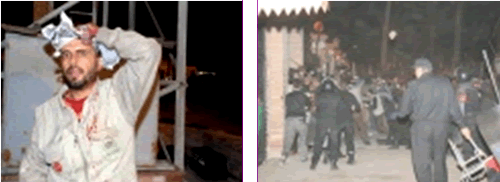
Left: Wounded IHH operative (wearing a vest similar to those worn by IHH operatives on the Mavi Marmara. Right: Confrontation with the Egyptian security forces (ihh.org.tr)
13. The following is a free translation from the Turkish of Bülent Yildirim’s description of the events in Egypt: “…Egypt wanted to divide the delegation entering the Gaza Strip into two parts. They refused to allow the first group which arrived in El Arish to enter, but we objected to that. The Egyptian response was to confiscate 59 vehicles which we were bringing as a donation [to the Gaza Strip]. We resisted and they immediately surrounded us. When we began negotiating with them they attacked us. They threw stones at us. Thirty of our members were wounded, five of them seriously. They arrested seven of us. We responded to their attack. We captured seven Egyptian soldiers, and released three who had been wounded. That left four with us. We were willing to release them if our men were get go. After the first attack the Egyptian soldiers surrounded us on land and at sea. We were besieged. They could attack us again” [ITIC emphasis].[4]
14. In the end, following the intervention of the Turkish prime minister and foreign minister, on January 5 some of the convoy’s activists, including Bülent Yildirim, were allowed to enter the Gaza Strip with part of the equipment they had brought, and were received by Hamas.

Left: Bülent Yildirim and de facto Hamas administration head Ismail Haniya. Right: Reception for the delegation in the Gaza Strip (ihh.org.tr)
15. In reaction to the confrontation between the (predominantly Turkish) members of the convoy and the Egyptian security forces, thousands of Turkish protestors took to the streets to denounce Egypt and its actions against the convoy. Some of the demonstrations took place in front of the Egyptian consulate in Istanbul. The demonstrators carried Palestinian flags and signs condemning the Egyptians’ use of force. They waved Hezbollah and Hamas flags, and held up pictures of Imad Moughnieh and Egyptian President Hosni Mubarak shaking hands with Tzipi Livni.
Pictures from the Demonstrations in Istanbul

Anti-Egyptian demonstrations. Right: The sign reads "We are all Palestinians— We will resist (muqawamah)" (Hürriyet, January 2010)

Flag of the SP Party, whose activists participated in the Mavi Marmara flotilla, and the Palestinian flag bearing the inscription "We are all Palestinians—We will resist" (ihh.org.tr)
Egyptian Response
16. In response to the violent confrontation in El Arish, which the Egyptian leadership called “contempt from visitors in the country,” the spokesman for the Egyptian foreign ministry said that Egypt had been surprised by the convoy which “lacked any humanitarian semblance and did not bring any aid, and which did not report its arrival to the authorities.” Egypt also declared George Galloway persona non grata because he had fanned the flames during the riots in El Arish, and he was forced to leave Egypt (Ynet and Haaretz, January 8, 2010). Abu al-Gheit, the Egyptian foreign minister, said that Egypt would not allow similar convoys to enter its territory and that it would formulate a new arrangement through the Red Cross or Egyptian aid organizations to transport humanitarian aid to the Gaza Strip (Egyptian TV, January 8, 2010).
Learning the Lessons of Lifeline 3
17. IHH and Hamas learned the lessons of the Lifeline 3 convoy and the harsh Egyptian reaction. The main lesson was the need to avoid confrontations with Egypt in the future and to shift the focus of attention, practically and for the media, to Israel.
18. The lesson was applied in an interview with Muhammad Sawalha, a Hamas operative in Judea and Samaria who found asylum in Britain and became a senior figure in the Muslim Brotherhood, which participates in anti-Israeli activity, including the organization of convoys to the Gaza Strip. He said that Lifeline 3 found itself involved in an “unwanted confrontation” with the Egyptian authorities and “the next time the confrontation will be directly with the Zionist enemy itself on the high seas” (Hezbollah’s alintiqad website, January 17, 2010)
Notes:
1 George Galloway is a pro-Palestinian anti-Israeli former British MP, who played a key role in organizing the Lifeline aid convoy to the Gaza Strip. Following the confrontation with the Egyptian authorities he was declared persona non grata in Egypt.
2 Several containers of pepper spray were found aboard the Mavi Marmara and had been prepared in advance for the confrontation with the IDF forces.
3 Ihh.org.tr.
4 Ihh.org.tr, January 6, 2010.



 RSS
RSS

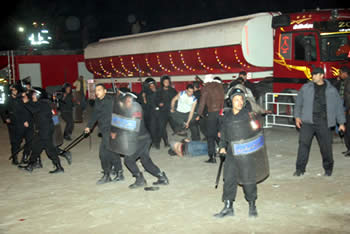
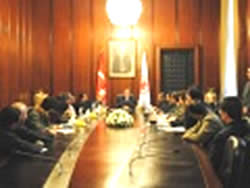



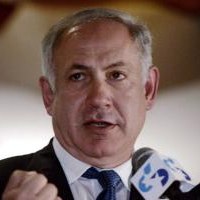

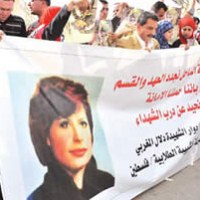
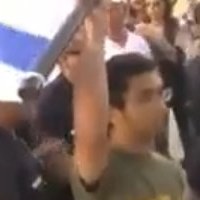




The IHH violence against the IDF was similar as the violence against the Egyptian security forces #israel #IHH #gaza http://j.mp/9V3sg7
The IHH violence against the IDF was similar as the violence against the Egyptian security forces #israel #IHH #gaza http://j.mp/9V3sg7
[…] https://www.crethiplethi.com/the-ihh-…s/israel/2010/ […]
RT @CrethiPlethi: The IHH violence against the IDF was similar as the violence against the Egyptian security forces #israel #IHH #gaza http://j.mp/9V3sg7
[…] [6] See the July 20, 2010 article: “The IHH Violence Against the IDF Was Similar as the Violence Against the Egyptian Security Forces”. […]
[…] For further information see the July 20, 2010 article, The IHH Violence against the IDF was Similar as the Violence against the Egyptian Security Forces in January 2010 by Lifeline 3 […]
[…] [3] For details, see the July 20, 2010 article: “The IHH violence against the IDF was similar as the violence against the Egyptian Security Forces“. […]